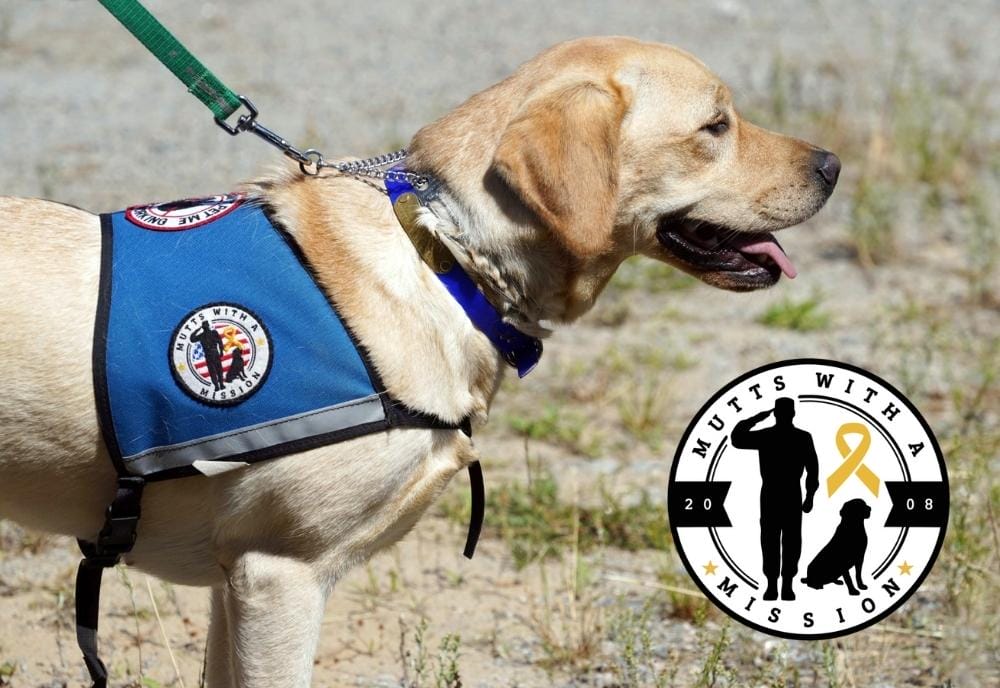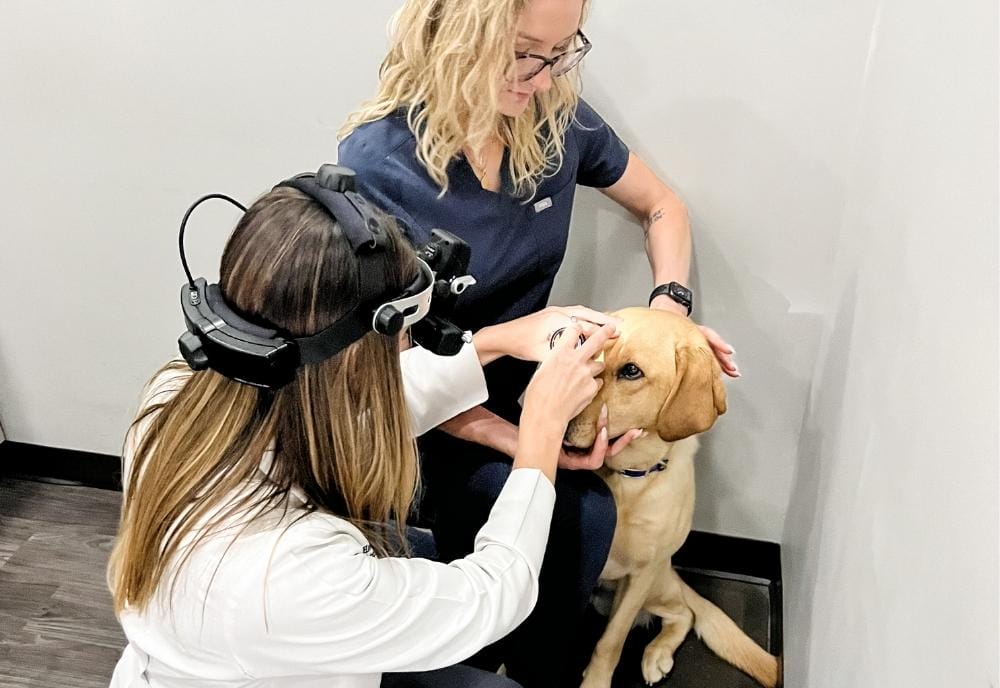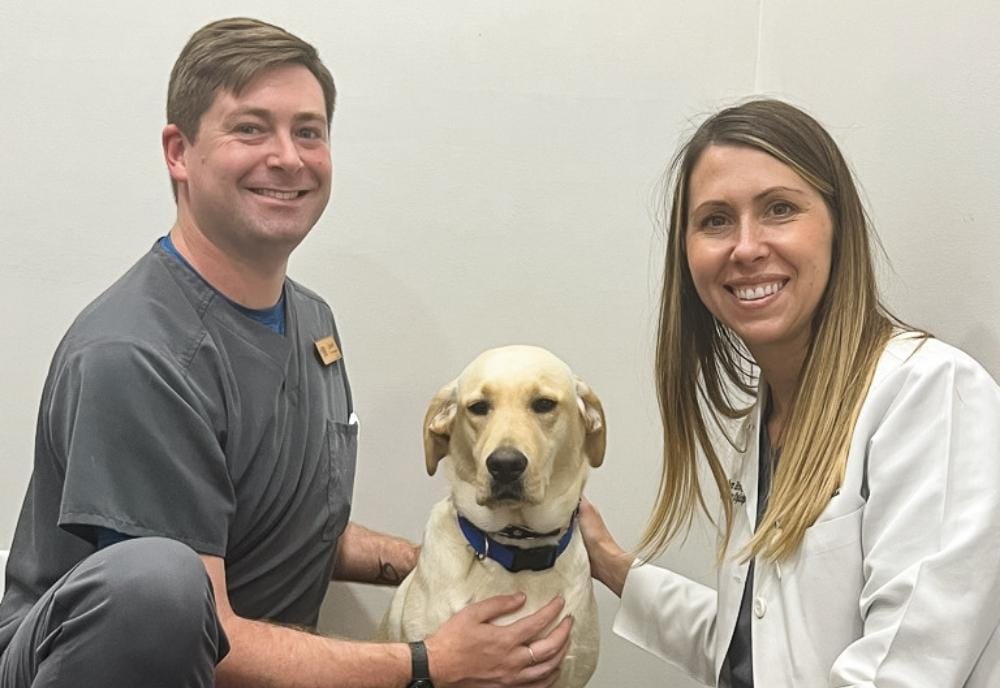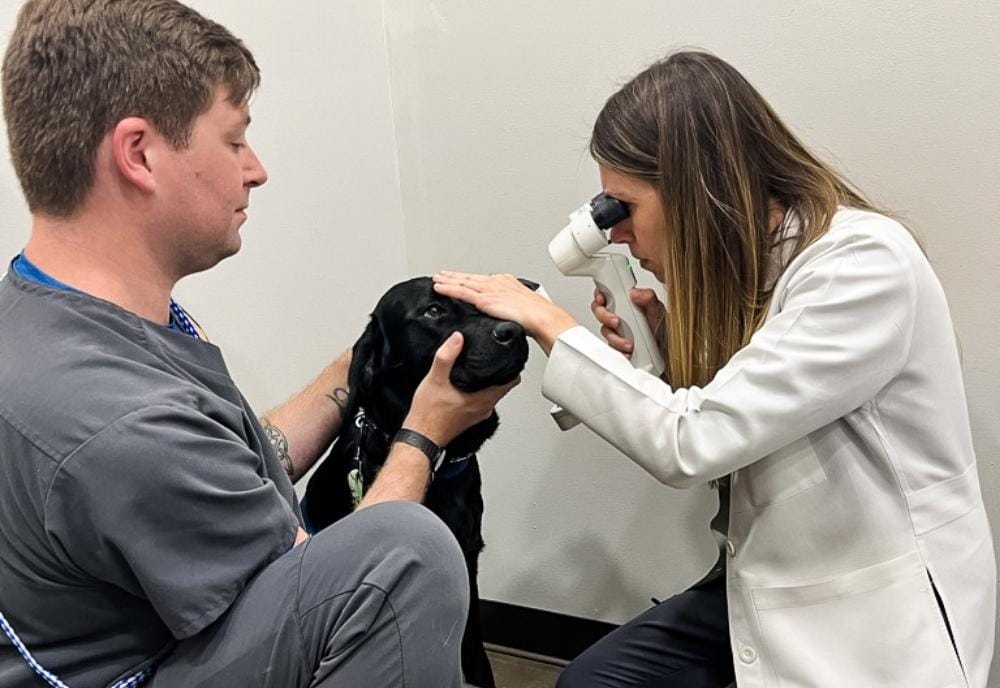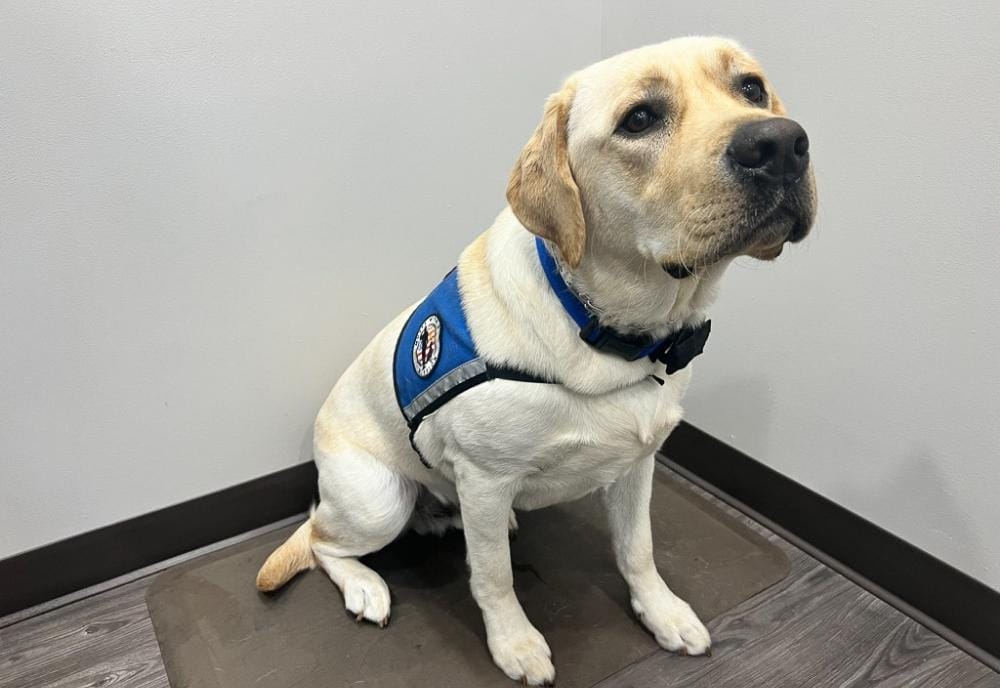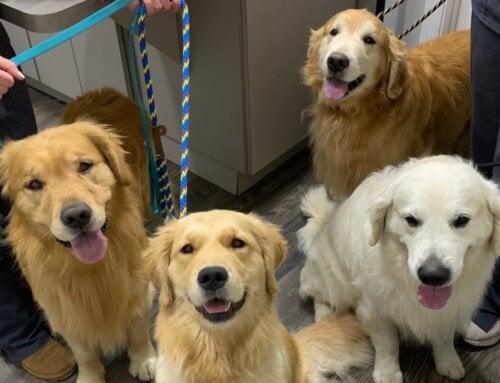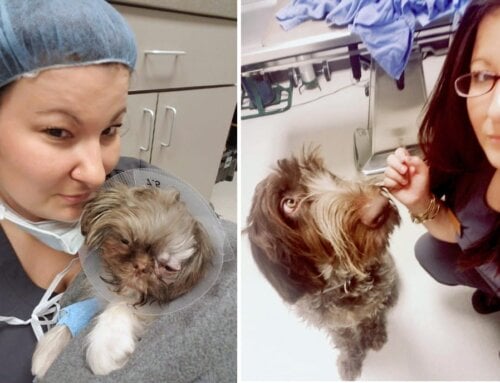By Heather Brookshire, DVM, DAVCO
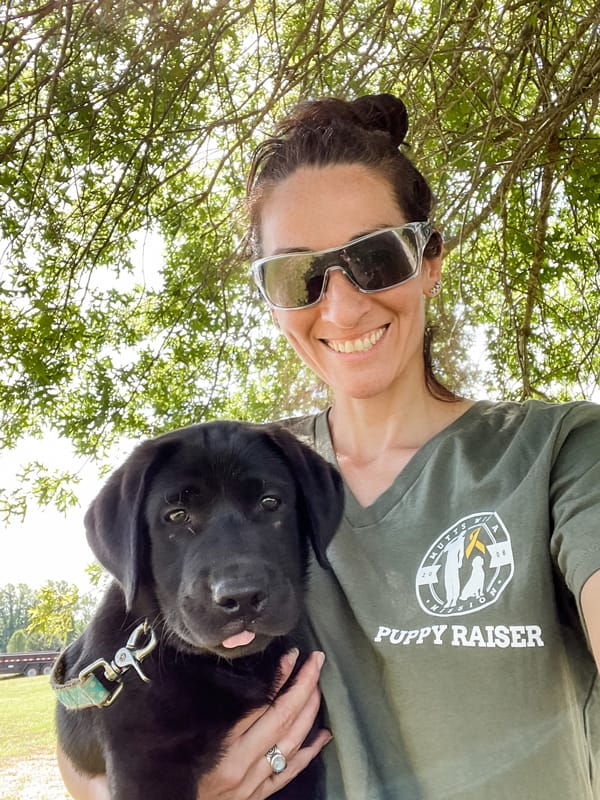
By day Nicole Ballard works with animals as a licensed veterinary technician with Coastal Virginia Veterinary Dermatology. Off the job, she is a foster rock star, volunteering her time fostering and training puppies to help service members with disabilities through Mutts With A Mission.
Headquartered in Virginia Beach, the national nonprofit organization trains service dogs to help disabled veterans, law enforcement officers and first responders with tasks to help with mobility and mental health needs—and to engage them with the outside world.
Training is a lengthy process. The dogs spend 18 months living with a puppy raiser, while they go through a two-year training program at the nonprofit’s Virginia Beach facility. On graduation, the organization places the dogs with service members throughout the United States, based on the person’s specific needs.
We met Nicole through her veterinary job. Recently, she arranged for 12 service dogs to come to Animal Vision Center of Virginia for ocular exam appointments. It was a wild and wooly day! When the dust settled, we enjoyed quiet time afterward to catch up with Nicole for this Q&A.
Tell us about your job with Coastal Virginia Veterinary Dermatology.
I work as a specialized licensed veterinary technician (LVT) in dermatology. I have been in the veterinary field for about 14 years and have worked as an LVT in five states due to my husband’s active-duty Navy status.
How did you discover Mutts with a Mission, and what is your role with this group?
I came upon their table at the Patriotic Festival in Virginia Beach in 2018. I filled out an application to become a puppy raiser and had an interview within a few weeks. Puppy raisers foster the puppies in their home and take them to the training facility for weekly sessions. Then we continue the training at home. It is a 24/7 volunteer job. You address behaviors when they happen, not just in the active training sessions.
I started working with my first service dog in training, Bosco, when he was three months old. This involved weekly instructions and status updates for about 18 months. Since then, two puppies I have had the privilege to raise have graduated the program and are now with disabled veterans. A third puppy will graduate this fall, and then I will get a new puppy.
What are the service dogs trained to do?
Many veterans are on medication for Post-Traumatic Stress Disorder (PTSD) and Traumatic Brain Injury. The dogs have a timer on their collar that goes off, alerting their person when it is time to take their meds. The dogs know commands for bringing them their prescriptions and bottled water.
Mutts with a Mission staff also train the dogs to recognize cues, such as finger picking or tapping, which can be signs of stress. Triggers can lead to panic attacks or PTSD episodes. The dogs will get the service member’s attention to try to prevent the attacks. This way, the veteran is focusing on the dog and not the trigger.
In addition, service dogs get veterans out into the world. Many have so much PTSD and anxiety that they stay home. Recently, one veteran was able to go to a concert with his daughter for the first time in years, because the service dog was there with them. The dogs give them the ability to get out and about.
Why is it important for service dogs to have healthy eyes?
Having optimal vision is especially important for service dogs. For example, these dogs need to recognize their handler, their handler’s movements, and behaviors. More specifically, they need to be able to visually recognize the cues that I mentioned earlier, which can lead to destructive behavior. The dogs are also trained to recognize specific items for retrieval such as phones and keys associated with specific commands.
What does it mean to you personally to be involved with this organization?
When dogs are placed with a service member, it feels good to know where they are going. It is like seeing your kid graduate from school, knowing they have a purpose. And I have personally witnessed the difference a service dog can make in a disabled person’s life. They gain independence and are able to live the full live they deserve, with less pain and limitations.
What would you like people to know about Mutts with a Mission?
Mutts with a Mission is a wonderful nonprofit organization that benefits our disabled military and first responders. It provides this service at no cost to them, and volunteers play a vital role in the dogs’ training. The organization is always looking for puppy raisers, trainers and funds.
We really enjoyed seeing the Mutts with a Mission dogs for their appointments. As Nicole noted, it is so important for service dogs to have healthy eyes. That is why Animal Vision Center of Virginia offers free screenings for qualified service animals throughout the year. Early detection of ocular disease allows them to keep up their important work without missing a beat.
For more information about Mutts with a Mission, visit www.muttswithamission.org.
